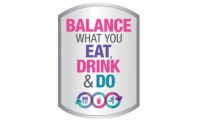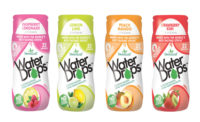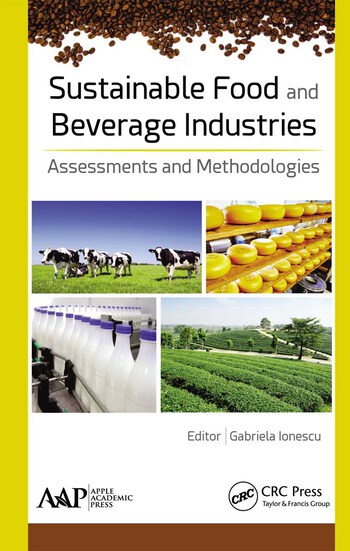R&D Feature
Sweetener content, source plays key role in consumers’ food, beverage choices
Suppliers delivering on clean label, sugar reduction sweetener needs

Dogfish Head’s Lemon Quest is brewed with real lemon puree, blueberry juice, acai berries, monk fruit, sea salt and Hopsteiner Polyphenol-Rich Hop Pellets
Image courtesy of Dogfish Head Craft Brewery Inc.
The social media influencer universe can be a complex business when identifying the top talent draws. In fact, on his website nealschaffer.com, fractional CMO Neal Schaffer compiled a list of the Top 30 Instagram Influencers To Follow In 2022 in which he segments the list based on industry of influence as well as other social platforms including TikTok and YouTube. Yet, in the beverage market, the true influencer is not on social media but is an entire ingredient category.
“Sugar content remains a key influencer for American consumers,” says Carla Saunders, senior marketing manager of high-intensity sweeteners for Cargill, Wayzata, Minn. “According to our proprietary research, 62% say they are likely to check the amount of sugar before purchasing a new product, making sugar levels a higher priority than sweetener type or a specific sweetener claim.”
Saunders notes that the interest in the amount of sugar comes as more consumers, particularly younger ones, are more open to less sweet tasting products.
“Three out of five consumers aged 18-29 say they’re seeking products that taste less sweet, and this trend is especially evident in the booming flavored water and hard seltzer space,” she says.
David Nichols, senior manager of category strategy and planning at Tate & Lyle, Hoffman Estates, Ill., also highlights proprietary research noting the influence that sweetener content has on consumers’ purchasing choices.
“In Tate & Lyle’s 2022 proprietary consumer research study, 63% of U.S. consumers state that reading sugar on a product’s ingredient line does impact their likelihood to purchase that product,” he says. “Meanwhile, 81% of U.S. consumers factor their perception of high-fructose corn syrup into their purchase decision when seeing it on a product’s ingredient line.
“Tate & Lyle’s proprietary consumer research also identifies that the type of sweetener used in a beverage not only impacts a consumer’s purchase intent, but also their actual purchase habits,” Nichols continues. “Forty-five percent of consumers in the study state that they have changed their intake of sweeteners in the beverages they bought over the past 12 months, with the most common change being a switch from full sugar to reduced sugar beverages.”

Image courtesy of Rowdy Energy
Christina Coles, senior associate marketing manager of sugar reduction and specialty sweeteners for Ingredion as well as Women of Ingredion Network (WIN) North America Regional Lead, explains that the Westchester, Ill.-based ingredient supplier has identified Health Reimagined, a more holistic approach to health, as one of the key macro trends impacting the sweetener market.
“This macro trend impacts the sweeteners market because as consumers are becoming more focused on their health, they are paying more attention to the grams of sugar in products they consume, as well as the types of sweeteners being used,” she says. “This focus is resulting in the reduction in fully nutritive sugars like sucrose and corn syrup, as well as shifts away from artificial sweeteners like aspartame and Ace K.”
Thom King, CEO of Icon Foods, Portland, Ore., also calls attention to the affects that clean label is having on the sweetener market. “Demand for products with monk fruit, stevia and even allulose and erythritol continue to grow as consumers remove added sugars from their diets,” he says.
Choice collections
As beverage-makers grapple with consumers’ increasing interest in sugar-reduced, clean label beverages, suppliers note that this has elevated the positioning of many sweetener solutions.
Citing International Food Information Council’s (IFIC) 2022 Food and Health Survey, Cargill’s Saunders notes 73% of consumers say they are trying to limit or avoid sugars in their diet. And although not specific to sweeteners, IFIC research found that one-third of consumers now say “ingredient familiarity has a great impact on their purchases, up 10 points since 2018,” Saunders adds.
“Stevia sweeteners align with both these trends, boasting strong familiarity with U.S. consumers and enabling deep sugar reductions,” she explains. “In our latest round of research, we found 73% of consumers were familiar with stevia sweeteners. For comparison, just 26% were familiar with monk fruit extract.”
Noting that sugar reduction was a top trend for years and has continued throughout the pandemic, Saunders notes that the company has seen use rate of stevia and erythritol increase at double-digit rates.
“Beverages made with stevia are dramatically outperforming the total beverage category, driving growth. In the U.S., retail sales of stevia-sweetened beverages total $1.4 billion and are growing at a CAGR of 11.6% (2017-21),” she says, citing Nielsen data ending Oct. 9, 2021. “For comparison, total beverage category sales for the same period were up just 7.1%.”

Image courtesy of Lemon Perfect
To support this progression, Cargill’s newest sweetener system, EverSweet + ClearFlo, amalgams its stevia sweetener with natural flavor.
“The resulting sweetener system offers wide-ranging benefits that include flavor modification and enhanced mouthfeel, along with improved solubility and stability in formulations, and faster dissolution,” Saunders says. “It’s unique in the marketplace and a true game-changer for beverage formulators.
“Using EverSweet’s quick sweetness onset and high sweetness potency as a foundation, EverSweet + ClearFlo goes a step further to create an even more sugar-like experience, especially at higher concentrations,” she continues. “At the same time, it helps manage off flavors from other ingredients used in formulation, be it earthy notes from proteins, bitterness from caffeine or metallic tastes from minerals.”
Ingredion’s Coles notes that the demand for sweeteners like stevia has come as suppliers have employed technologies that have been able to extract better-tasting stevia properties.
“The next generation of stevia and non-stevia based high potency sweeteners have improved to provide clean sweet taste, reducing unwanted bitterness and aftertaste, which may come to mind when thinking of earlier stevia technologies (including Reb A),” she explains. “These advances allow for deeper sugar reduction than was previously possible, while still creating great tasting beverages without all the sugar. This, coupled with consumers’ desire for more non-artificial and plant-based options is driving growth in this space.”
Casey McCormick, head of global innovation at Sweegen, Rancho Santa Margarita, Calif., explains that as consumers demand low- and no-calorie beverages, they still desire the sugar-like taste and mouthfeel.
“The sugar reduction heroes in product developers’ toolkits for developing beverages are modern stevia technologies produced by bioconversion, such as Sweegen’s Signature Stevia rebaudiosides B, D, E, M, N, and now sweet proteins, such as brazzein and thaumatin, which are produced via precision fermentation,” he explains. “Sweegen’s bitter blocking technology can mitigate up to 80-100% bitterness in particular applications, such as functional beverages with a nutritional edge.”
McCormick adds that earlier this year, Sweegen announced the commercial launch of its Bestevia LQ, a liquid stevia, which will help beverage-makers looking to incorporate stevia in zero-sugar and low-calorie beverages and concentrates.
“This breakthrough product line will eliminate the solubility challenges that some products and factories can encounter,” he says.
Grace Kim, principal food scientist at Tate & Lyle, also calls attention to the proliferation of stevia and other natural sweeteners as improvements to their taste properties is growing interest in these new age sweetener system.
“Stevia and monk fruit are key growth drivers in the beverage market,” she says. “According to Nielsen, over the past three years, beverages sweetened with stevia have a plus 8% CAGR while beverages sweetened with monk fruit have a plus 45% CAGR. As an industry, we’ve done so much in the stevia space. I would dare to say that if you have only explored high purity Reb A in your products you may truly be missing out of a better tasting more cost-effective solution. Products like our OPTIMIZER STEVIA 2.10 are designed to provide good sweetness quality, with higher solubility rates at a better cost-in-use.”
Citing Tate & Lyle’s 2020 and 2022 proprietary consumer research studies, Nichols notes that the use of non-artificial, low calorie sugar alternatives such as allulose, stevia and monk fruit aligns with consumers evolving viewpoints.
“Whereas a few years ago, sugar remained the gold standard and ingredients like stevia and monk fruit were seen as the best options among those that could achieve calorie reduction in beverages, today allulose, stevia and monk fruit all garner stronger purchase intent than sugar, while sugar is still viewed more positively than artificial sweeteners,” he says.
Icon Foods’ King notes that the rise of these clean label sweeteners also has led to an increase in sweetener blending for formulations.
“The blend of allulose and monk fruit is gaining traction in beverage formulations,” he says. “Allulose performs like sugar, even providing mouth feel and viscosity like invert sugar or HFCS. While monk fruit brings the sweetness to parity with sugar or DE42 HFCS, making it a seamless plugin for clean label sugar reduction.
“Additionally, the use of clean label sweetness modulators is growing in demand,” King continues. “Icon Foods’ Thausweet is a sweetness modulator that uses thaumatin, a protein-based sweetener derived from the katemfe berry indigenous to South Africa. It extends the experience of sweetness and can help cover off-notes without the use of a masker, which can also mask desired flavors. It is especially beneficial in energy drinks and functional beverages with bitter adaptogenic herbs.”
Sweegen’s McCormick highlights how protein-sourced brazzein can elevate a sweetener system while being cost-effective.
“We’ve had tremendous interest in our Ultratia brazzein for use across all food and beverage segments,” he says. “While brazzein has not been commercially available until now, it’s long been understood that it is highly soluble and has good stability at a low pH and in high heat applications. These attributes, combined with being up to 2,000 times sweeter than sugar, make the ingredient appealing to manufacturers. Brazzein pairs very well with our Signature Stevia Sweetener Systems to deliver cost-effective solutions with an excellent taste.”
However, sugar reduction is not the only trend influencing consumers’ sweetener choice.
“The sweeteners used in beverages has been a hot topic lately as new product developers try to find the magic ingredient that enhances the flavor of the beverage and is positively received on the ingredient listing,” says Catherine Barry, vice president of marketing for the National Honey Board, Erie, Colo. “Many new beverage formulas are using honey because the sweetener does just that. It makes beverages taste great and is very label friendly.
“Beverages sweetened with honey also are meeting several new consumer trends,” she continues. “For example, consumers are looking for bold flavor combinations that blend a familiar ingredient, such as honey, with a flavor that’s more exotic. Overall, consumers are focused on general wellness, energy and celebrating life’s simple pleasures. They’re looking to regain balance in their lives post-pandemic with diverse [ready-to-drink] (RTD) beverages, and honey adds to these experiences in a way that no other sweetener can.”
But no matter what influential sweetener that beverage-makers employ, you can be sure that suppliers are working to ensure the solutions align with the needs of today’s consumers.
“We are expanding our toolbox to address the variety of needs our customers have in addressing their beverage goals,” Tate & Lyle’s Kim says. “We are constantly innovating in this space to meet the challenging taste requirements of beverage consumers. Consumers are used to a particular sweetness profile in their beverage rituals, and we believe we are building tools that can help to address those needs.”
Looking for a reprint of this article?
From high-res PDFs to custom plaques, order your copy today!









